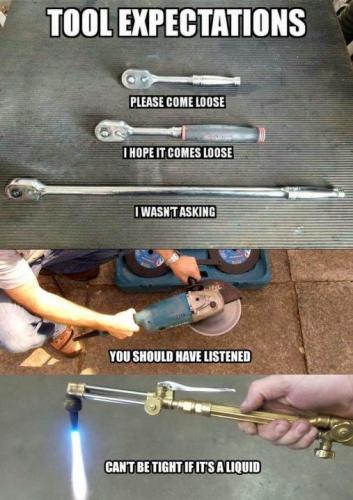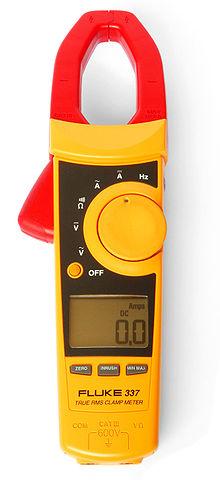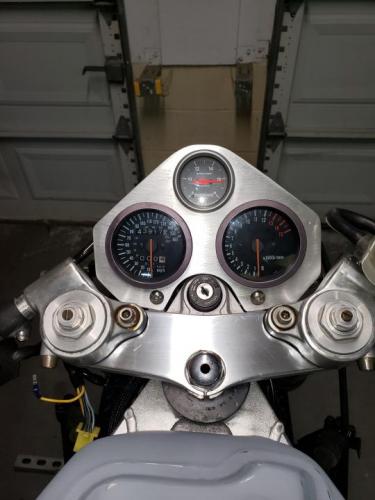-
Posts
272 -
Joined
-
Last visited
Content Type
Profiles
Forums
Events
Posts posted by Captn
-
-
11 hours ago, Gixer1460 said:
That 14:1 figure is not far off stoichiometric ratio @14.7 which although ok for cruise mode is pretty lean on power / under load - I'd err towards 13.6 - 13.2:1 for max power / safety!
Thanks for the input. I may change jetting a bit more and see how it feels. Sure would be nice to have a dyno to really nail down the A/F ratio to HP gains. That info really intrigues my tiny mind. As of lately that bike is more garage art than anything.
-
I'm running K&N on my 750 M with no issues. Dynojet Stage 1 with 120 mains. Stock header and custom mid pipe with fresh packed Vance and Hines Supersport. Dyna 2000 ignition. Bike runs great and jetting was set up using an Autometer wideband O2. Idles at 14.5, revs at 14.0 loaded. Ran the same pods on my previous 1100 N. Same basic mods. No issues.
-
I thought that was where the Bluetooth adapter connected. USB 2.5 port?

-
 1
1
-
-
I modified mine to mount the AirTech fender as it did not hug the tire tight enough. Removed some material as well. I felt the brace was needed as it is also has the brake caliper hose retainer loops on each side.
-
Does someone want to rename this thread? I suggest Tewl Tawk.
-
-
Hope that GSX has training wheels. Seriously dude, be careful. Read the manuals, understand the mechanics behind what you are doing.
-
@Detrailershave a spot on the mid pipe to weld in an O2 sensor bung? Ideally 4 to 5 inches from the header collector. Install a wideband sensor and controller to help verify effectiveness of jet changes. The "seat of the pants" method is not too precise and dyno runs can be expensive. You can get great feedback from an O2 readout. Of course if you have the bucks a dyno run is best.
-
 1
1
-
-
Amazing work!!
 Really diggin' the black set. Great contrast and the sanded Mikuni script, sweet!
Really diggin' the black set. Great contrast and the sanded Mikuni script, sweet!
-
Good stuff there.
-
Lead acid type battery? AGM type? Lithium type?
-
After a 12 hour float charge, load test the battery if possible to verify its load carrying capability. Re install in the bike. Start and idle engine. Measure and record DC voltage and DC amperage at idle. Measure and record DC voltage and DC amperage at 4500 rpm. You should see voltage increase from idle to 4500. Amperage should not increase much during this same test. Carb or fuel injection?
-
Is the battery older? Was it on a trickle charger prior to being used in the bike? Was its state of charge strong?
-
-
In theory it should be the reverse of that. Idle would be in the high 12's and revving it would be mid 14's, not to exceed 15. Lead acid battery? Do you have a way to measure DC amps?
-
Welcome to OSS. Pics are required and appreciated.

-
8 minutes ago, Gixer1460 said:
I think the USA got shims, a model year earlier than us in Euro land ie 'L' models were shims and their 'N' models had water cooling.
I've got a 92N oil boiler. Probable the last one ever in the states. LOL. It's a shim head.
-
Sweet machine. We're jealous over here!
-
 1
1
-
-
@Wagolathe unit that's shown on my bike pic is an Autometer wideband. Part number is Autometer 4370. It is a complete kit with sensor and controller/gauge. Easily wired. I have had it on 4 bikes over a period of 6 years. Great piece. You will need to get a weld in 18mm bung for either steel or stainless steel depending on your exhaust material. This kit makes jetting much more accurate to establish a baseline. Combine this with a dyno pull and you'll get the best performance. Look on fleabay or your favorite auto parts performance parts site. Should be an easy find. Let me know if you need any more data.
-
Of course a wideband O2 sensor. Thanks to @Gixer1460for pointing out my several rookie mistakes.
-
Do yourself a huge favor. Install a O2 sensor and gauge, even if temporary, to see which way your changes take you. You'd be surprised how much of a difference little changes make. Jet/ tune to get close to 14.7:1 stoich. If you keep building and tuning bikes it is a must. Reading plugs isn't an exact result as is O2 reading are. I've ran them on bikes for years and can imagine trying to tune without one.
-
@jimbob1975. Thanks for posting your finding. That is the key to helping out, the feedback is important. Good find!!
-
 1
1
-
-
Awesome. That brochure would be a prized addition to any collectors stash.
-
Thanks guys, thats the kind of real world feedback I was looking for.







Slingshot headlights.
in Oil Cooled
Posted
Mine has both high and low beam on both bulbs. US spec. The hi/lo bar switch is used to power a relay coil to switch the voltage to each filament due to the amperage draw of the filaments do as no to burn up the hi/lo switch. If you are using LEDs the amperage is considerably less. I've got some excellent SIS wire (tin plated copper, high jacket temp rated) that is perfect for wiring bikes if you need some, free of course. Im just down the road from you. Text me if interested.